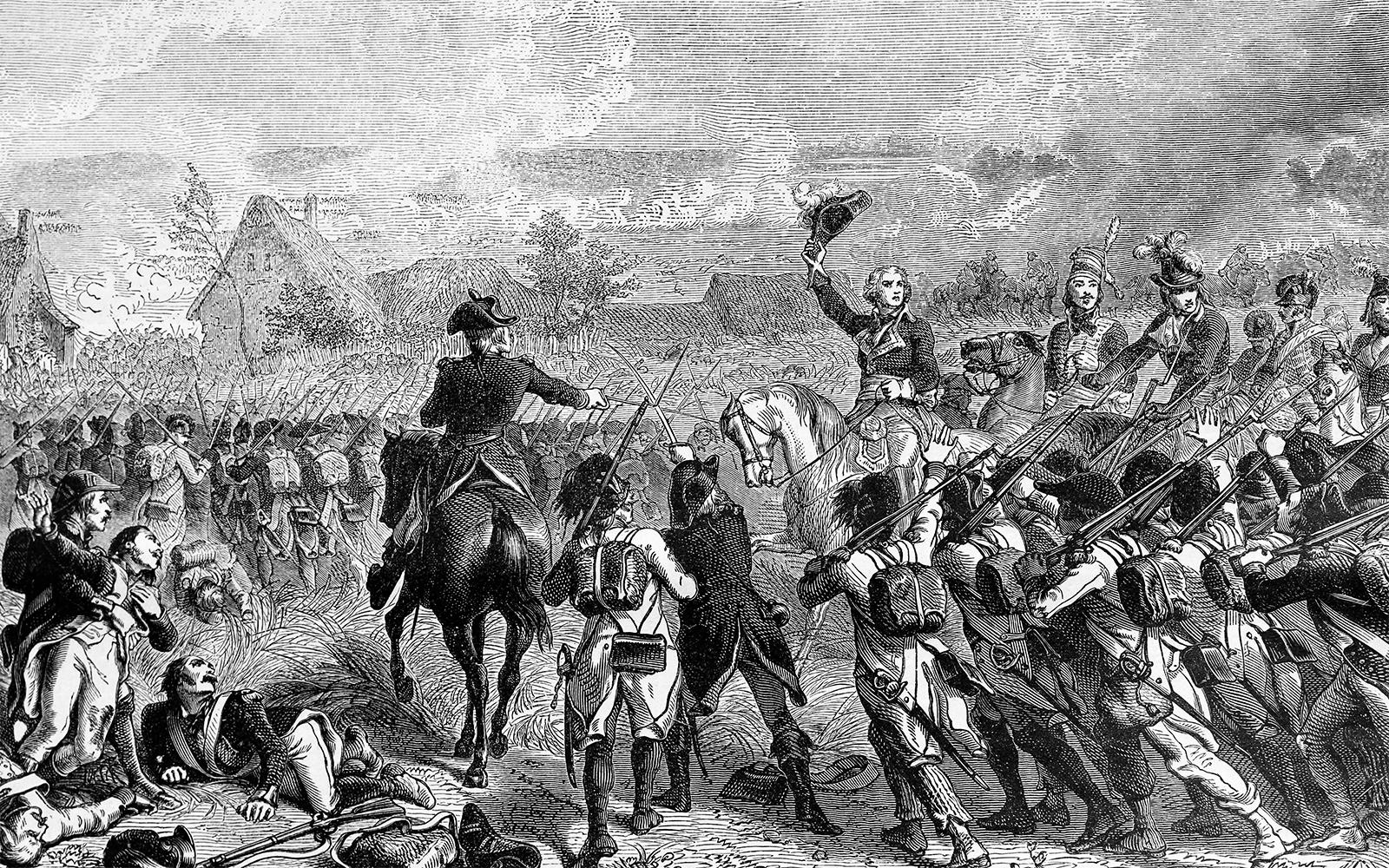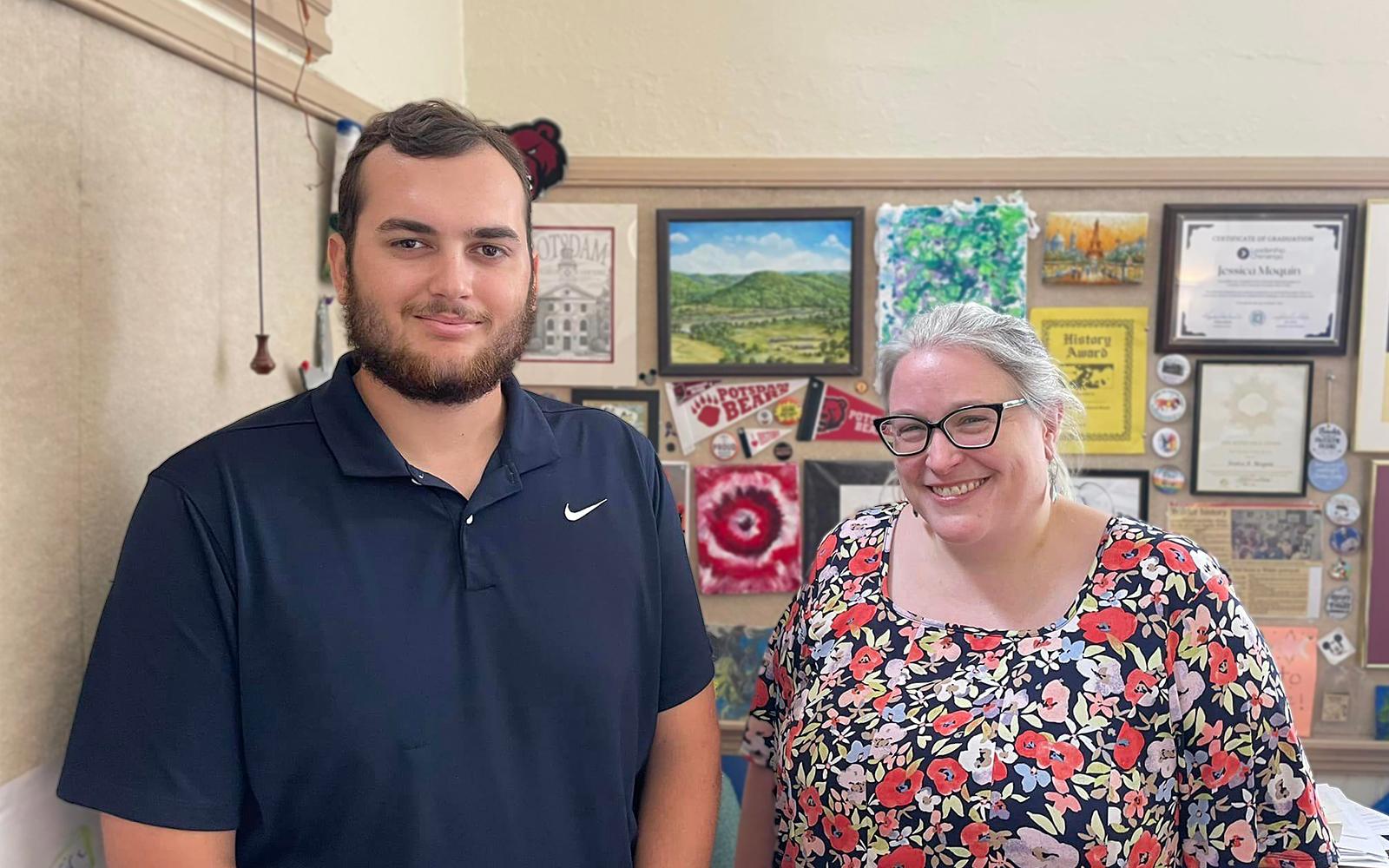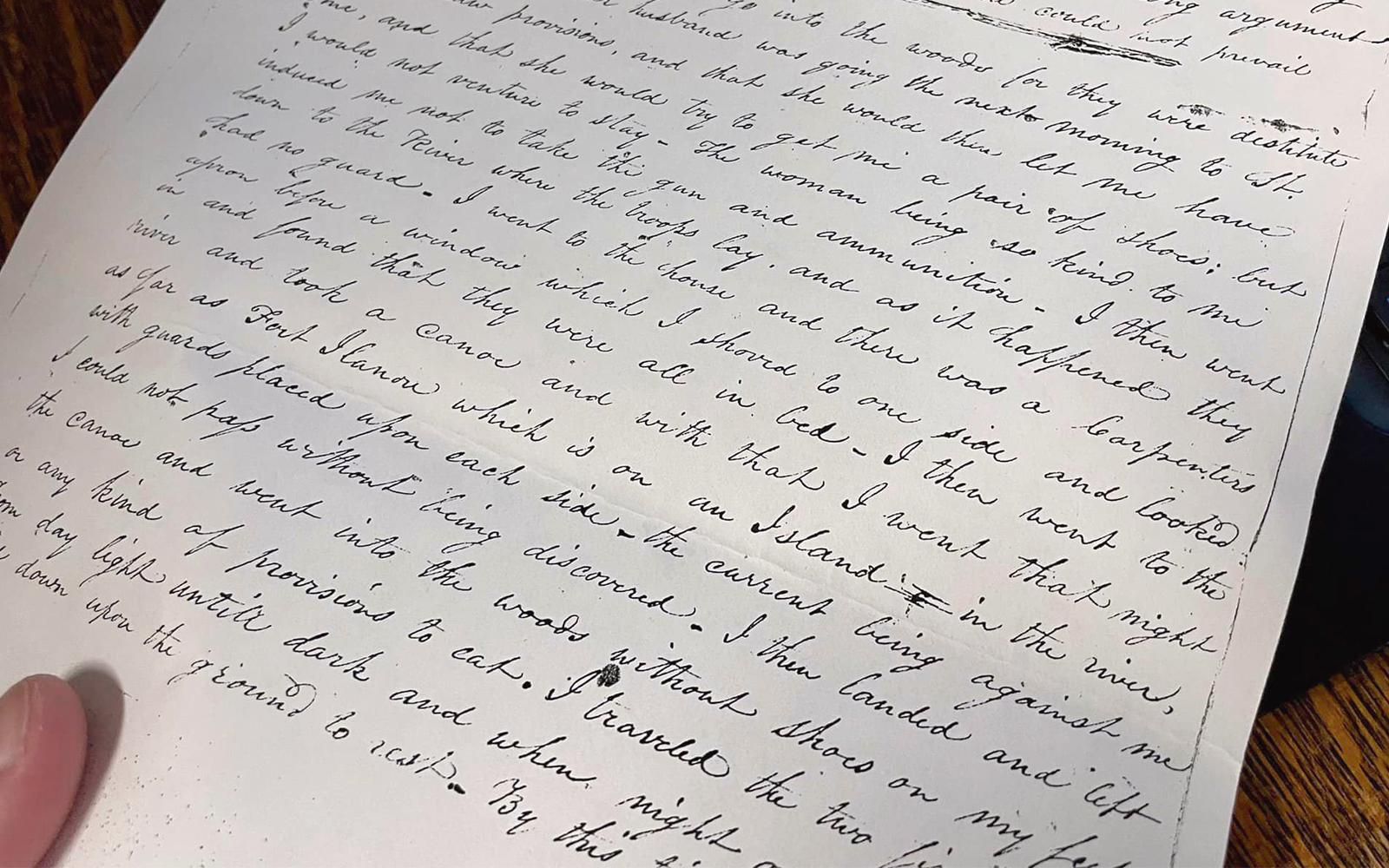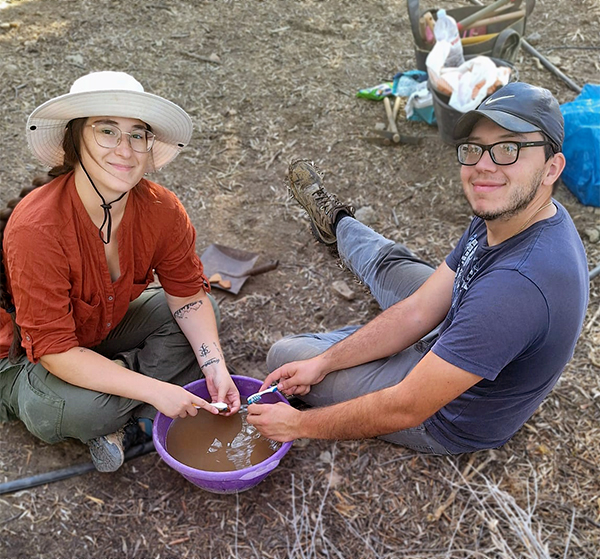In preparation for the 250th anniversary of American Independence, six SUNY Potsdam students have been completing hands-on internships this summer around New York State—delving into local history projects to examine the founding of the country, while also helping local historians plan for upcoming semiquincentennial celebrations.
SUNY Potsdam students Sharonmarie Bartz ’26, Nicholas Cardenas ’24, Ryan Costin ’25, Teresa Dickson ’24, Logan Lavallee ’26 and Noah Schwartz ’24 joined a cohort of 50 students from seven SUNY campuses across the state for the historical research projects. As part of the Robert David Lion Gardiner Semiquincentennial Summer Fellowship Program, each student received $4,800 for completing 150 hours of work with town or county historical societies or with local historians as part of a $300,000 grant, with another $150,000 in matching funds from the SUNY schools involved.
“Before the students started, Dr. Sheila McIntyre and I did a crash course on the American Revolution, particularly in New York State, to prepare them for their experiences,” said Dr. Tom Baker, a SUNY Potsdam history professor overseeing the applied learning experiences with Dr. McIntyre, also a professor of history at the College.
“For some places, the Revolution was literally occurring down the street. It’s a great opportunity for the students to learn about the Revolution and local history, which is really important, as a lot of them are going to be teachers.”
SUNY Potsdam history professor

Each of the students, spread out around the state from western New York to the Adirondacks, is examining the local history of the Revolutionary War, looking at written records from veterans, and supporting historians in preparation for events commemorating the 250th anniversary of American Independence.
For Ryan Costin, who is working at the Chenango County Historical Society, the fellowship has allowed him to drill into a rich history not far from his childhood home. The SUNY Potsdam senior has been collecting oral histories of Chenango residents and creating programs for the Chenango Historical Society’s Summer Series, including giving his own presentation about the bicentennial celebration that took place in the town back in 1976.
He has also been examining artifacts from the mid-18th century that are connected to the war. “My last project is creating an article for the New York History Journal under the artifact category, where I investigate how a local Revolutionary War powder horn made its way into Chenango County and why it is important. A powder horn can be best described as a storage method for gunpowder for soldiers. The horn was lightweight and had a strap so soldiers could always keep them attached to their person,” Costin explained.

Costin poses for a photo with SUNY Potsdam alumna Jessica Moquin '99 & '01, who now works as a historian at the Chenango County Historical Society.
In Montgomery County, Schwartz has been transcribing handwritten accounts from war veterans and searching local archives to uncover personal stories from the Revolution. “He’s learning a lot about local history and transcribing an account from Jacob Sammons,” Baker said.

“Montgomery County is one those places where a liberty pole was literally down the street. They would have a big party, where residents would whoop and holler and they would make a Tory [British loyalist] swear allegiance to the State of New York. When the Tory wouldn’t do it, they would tar and feather him, run him off, or worse,” Baker continued.

In Warren County and Queensbury, Dickson and Cardenas, two seniors at SUNY Potsdam, are both working on a census of Revolutionary War veterans’ burial sites, geotagging them, and creating short biographies of the veterans. They are also helping to prepare for an extensive celebration to reenact military activities during the war.
“The Warren County people have got a fairly extensive array of events that are going to happen starting in 2025,” Baker said. “That’s an area of the state where they dragged all the artillery from Fort Ticonderoga down to Boston in the middle of winter with sleds. They needed to get the British out of Boston, and the artillery they had was in Fort Ticonderoga, which they had just captured. So, I think they’re going to do some recreation of that and it’s going to go from Fort Ticonderoga down through Warren County, all the way to Boston.”
Dickson and Cardenas have been focusing on locating the unknown graves of Revolutionary War soldiers. Starting with the veterans’ dates of birth and death, locations where they lived, and information about their spouses. They have also been conducting searches on Ancestry.com and FamilySearch.com, searching for their pension records, and writing biographies about each soldier.

“Once we have this information, we head to cemeteries to try to locate the graves. I love the research side, especially when you finally find information about someone you have been looking for, and you have that ‘Wow, I did it’ moment. I also really love going to the cemeteries to find the graves. The thought of honoring someone who fought for our freedom, who has more or less been forgotten for hundreds of years, is a wonderful experience,” Dickson said.
As students comb through the local archives looking at hand-written letters and pension records, they bring to life the personal accounts of everyday Americans during the founding of the country—learning about the lives of infantrymen, rather than just the stories from well-known, high-ranking officers.
“The pension records are interesting in the sense that they often tell you a lot about common peoples’ experience, because it’s not necessarily the generals or the colonels, it’s sometimes the privates who say, ‘I was called out eight times in the militia for a month here and there, and I was involved in hunting Torys,’” Baker said. “Our students are doing transcription from 18th-century cursive, which is hard for a lot of them, although a lot of these students have had some experience because of my Public History class. This is an opportunity for them to see what it means to be a public historian, and that might lure them into thinking about either archives, public history, or library work.”
Michael Oberg, a distinguished professor in SUNY Geneseo’s Department of History and the director of the Robert David Lion Gardiner Semiquincentennial Summer Fellowship Program, secured the grant for the project and has been busy this summer visiting all 50 students around the state, including Potsdam’s six representatives.
“I was impressed with each of Potsdam's students who we were able to hire as Gardiner Foundation Fellows. Each student was polite, professional, and extremely well-prepared by the faculty in Potsdam's Department of History for the work that their historians asked them to perform. These historians have been singing the praises of these six Potsdam students since they started work late in May—testifying to the excellence of Potsdam's students and, especially, to the outstanding teacher-scholars in the Department of History,” he said.
When the students arrive back on campus this fall, they will be making presentations at the Potsdam Public Library to discuss their applied learning experiences, and then during the Spring 2024 Semester, they will share their projects at the College’s Learning and Research Fair.
“Doing work like this is an excellent experience outside of the classroom and is so beneficial in the long run,” Dickson said. “Having field experience like this will not only better prepare me for future schooling, but also for my future career. I can add this to my resume, and going into future semesters in college I will already have such great research experience under my belt that not many other students probably have.”
Article by Jason Hunter
